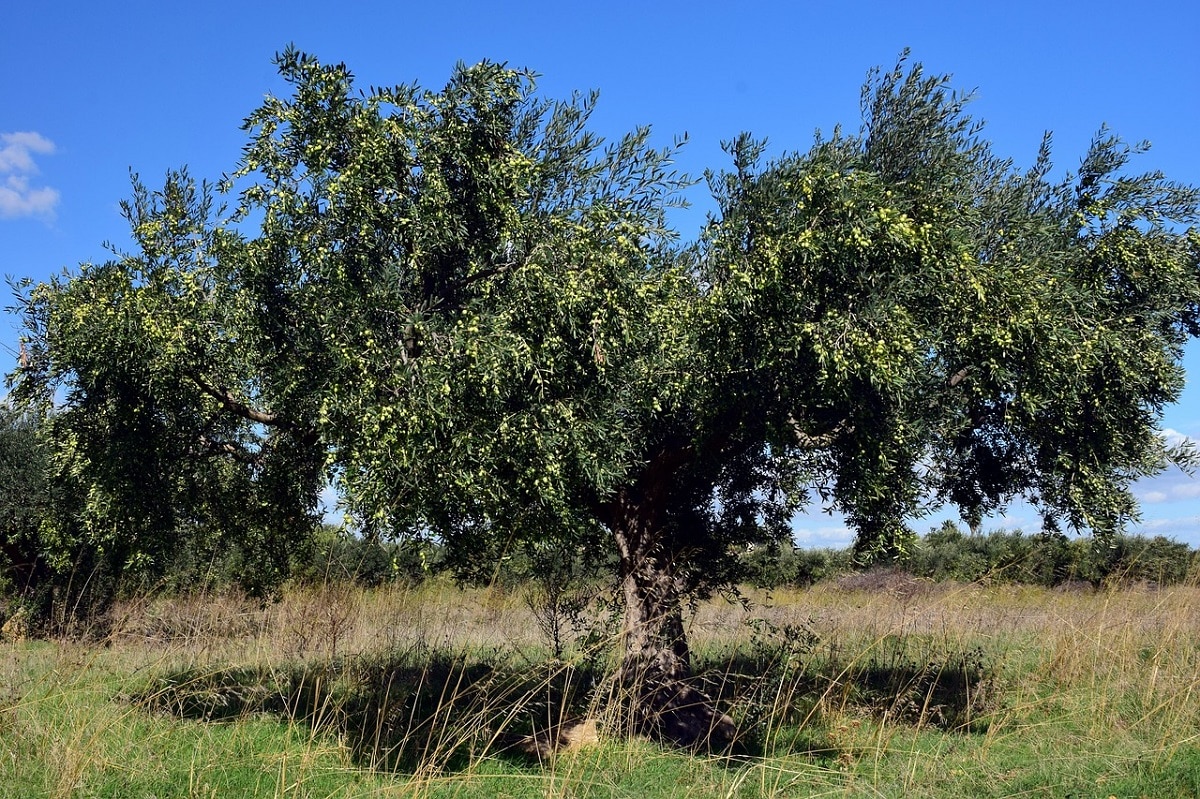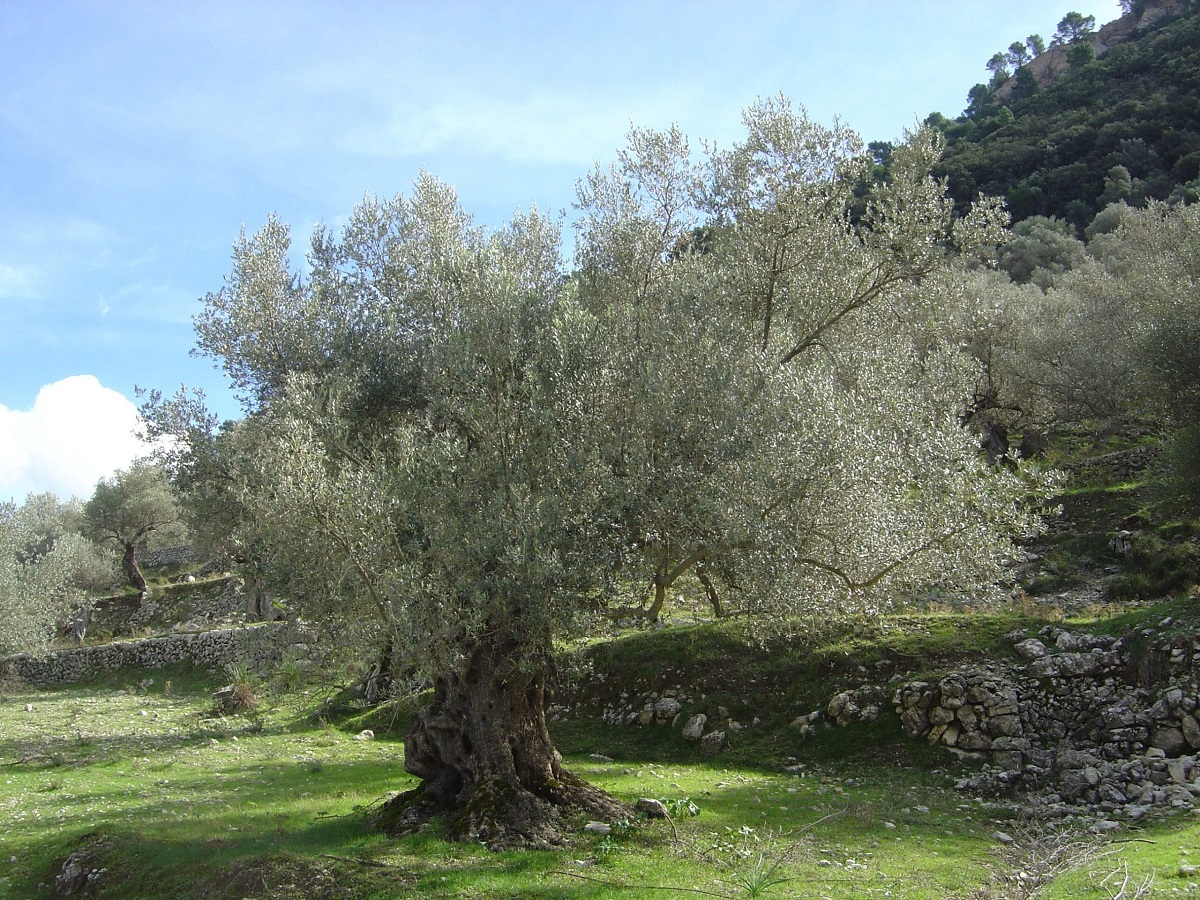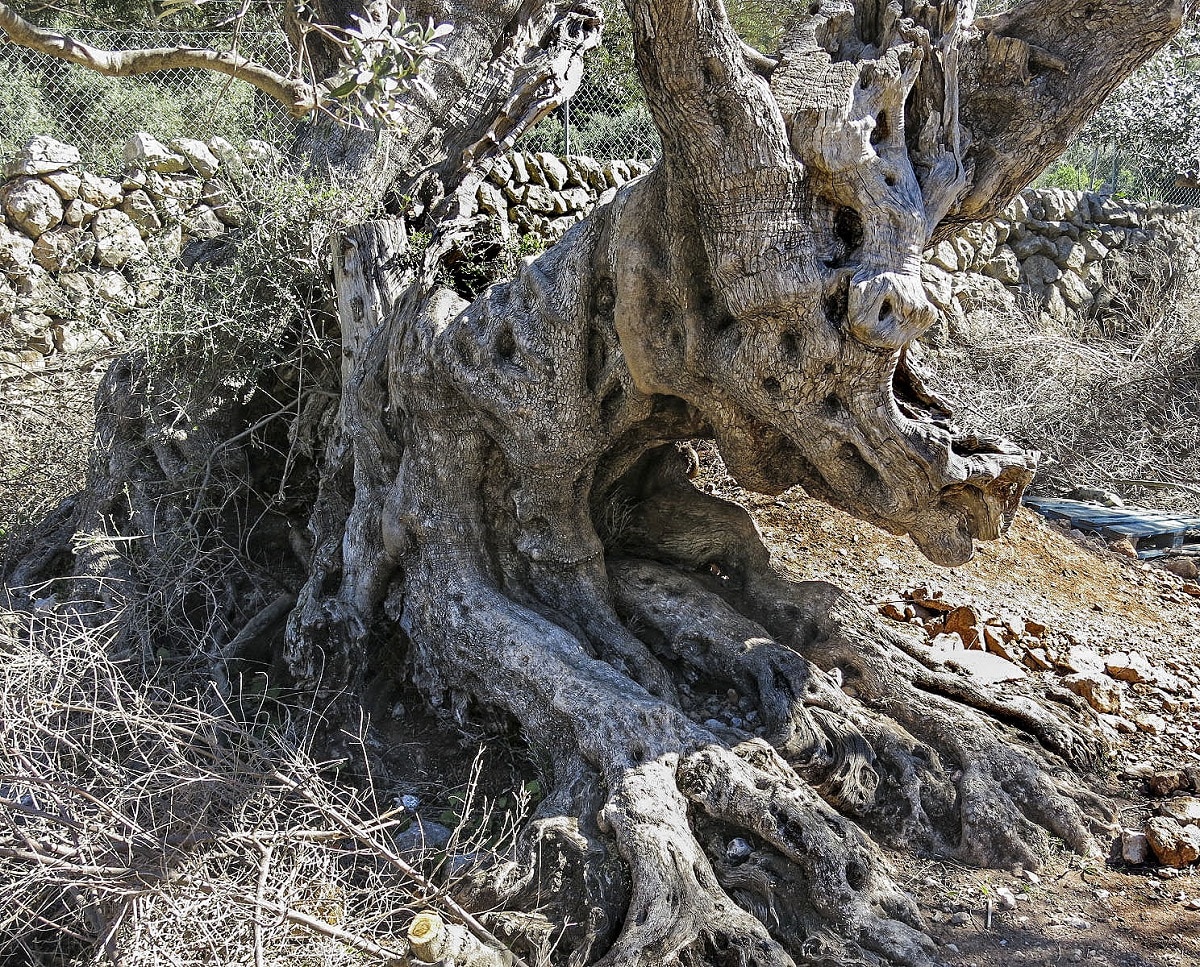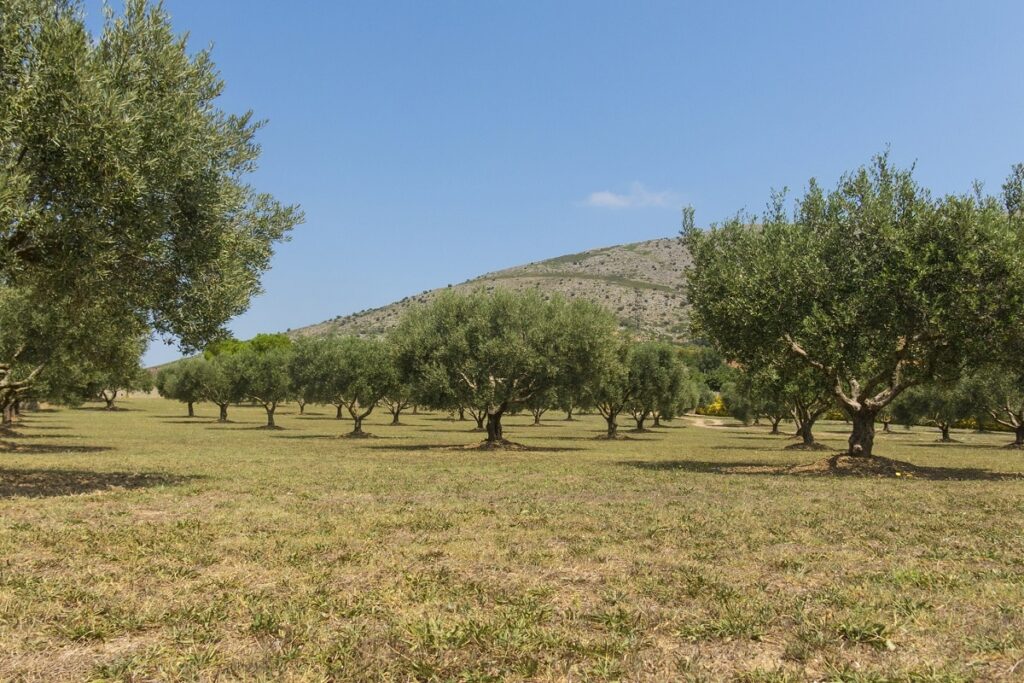
many people wonder how long does an olive tree take to grow. The olive tree, like any other tree, goes through a period of youth in which all the resources are available for the vegetative development of the plant, growing rapidly with the discharge of branches with long internodes. By “fast” we mean the slower subsequent growth of olive trees when they reach adulthood, as this species is usually quite slow compared to other fruit trees like cherry trees.
In this article we are going to tell you how long it takes for an olive tree to grow and what factors should be taken into account for this growth.
Contents
Characteristics of the olive tree

It is an evergreen tree with a rounded crown and generally does not exceed 10 meters in height, although there are some references to 15 meters, this is certainly the exception. Leaves lanceolate, opposite, entire, leathery, greyish green above and pale green below.
Pollination is almost exclusively by wind, and crossbreeding between varieties is recommended, although not the most common. Olive trees are partially self-pollinated, meaning the flowers can self-pollinate, but not ideally.
The fruit of the olive tree it is a juicy drupe with a high oil content, 1 to 3.5 cm long, oval or spherical in shape, green in color at first and dark purple when fully mature. Ripening takes place in late fall and early winter, but if they are to be harvested for storage, they are harvested in early to mid-fall while still green.
Factors That Influence How Long an Olive Tree Grows
Since olive trees almost always come from cuttings or cuttings, it takes longer to develop a root system than from seed. Therefore, growth will be minimal for the first few months after planting, and as the tree takes root we will notice how it becomes more vigorous. To promote rooting it is important that the soil is always moist, spongy and airy, without areas of compaction near the olive trees.
But beyond that, the plant’s agroclimatic factors and other factors have a great impact on olive tree growth, maximizing it when these factors are at their optimum point and decreasing it when they are further apart.
Like other plants, olive trees have a set of optimal growing conditions, often related to the environmental adaptations to which each variety is subjected in its place of origin or growth, and are artificially selected. Therefore, we cannot claim that a variety best suited to very hot climates will look the same in colder climates, as these are not conditions for which it is genetically prepared.
nutrients
The nutrients of the olive tree are the most important factor, in addition to being in an ideal environment, it must find all the nutrients it needs in the soil, and these nutrients must be balanced so that there is no excess compared to the other, since it can prevent the correct absorption of the latter. In professional plantations, soil and foliage analyzes are carried out to determine the crop’s nutrient requirements. On the other hand, at home, try to maintain the average pH of the soil – between slightly acidic and neutral – fertile, and regularly add various organic fertilizers, wood ashes, green manures, etc.
Water
Without water, soil nutrients cannot be taken up by the roots and biological processes in the plant cannot take place. Drought is a factor that can severely limit growth, especially in the first years of an olive tree’s life, when the roots are not well developed and the amount of soil to explore is limited. However, the olive tree is a tree with a high resistance to droughtdoesn’t mean it grows well in drought conditions, it just survives and doesn’t wilt.
temperature and brightness
plant development it is optimal at warm temperatures, but not above 35°C, when growth stops. The cooler the growing season (usually spring to fall), the slower the growth.
As for brightness, something similar happens. The olive tree prefers a sunny climate, so if it grows in a cloudy and dark environment, even in the development stage (spring and autumn), it will not grow optimally in this regard.
Pests, diseases and maintenance of the olive tree

This is common to all living beings. If the tree is infected with one or more diseases or is attacked by pests, its systems will consume many resources trying to combat the threat. In addition, the organisms that attack it also extract another large part of the olive tree’s resources.
If not handled properly, it can negatively affect the development of trees by slowing down their growth.
Genetic factors to know how long an olive tree takes to grow
Finally we will talk about the genetic characteristics of each race. Different cultivars or varieties arise within the same species by differentiation from a common ancestor. This differentiation occurs naturally due to the adaptation of the plant to a new environment or due to changes in the conditions of the environment in which it lives, but it can also occur artificially, the farmer being responsible for the choice trees he watches grow. better and healthier. Under certain conditions, whose products are higher or higher quality, require less water and nutrients, etc.
So if a certain variety of olive tree is genetically determined to grow slowly, there is not much we can do about it. On the contrary, if the variety is very vigorous, as it always is, although its growth can be slowed down a little, he will try to overcome it again and develop his natural form.
As we have already said, knowing the duration of growth of an olive tree can vary greatly depending on the more or less favorable factors that precede it. However, here we will present some of the most common approximate height data.
- For a 2 year old olive tree, we can expect it to be between 80cm and 1m high.
- At 3 years, in general, they can already reach 130 cm.
- By age 5 they will probably be over 150cm tall.
- From this moment, some olives can begin to flower and ripen. The number of fruits will gradually increase until the olive tree is between 20 and 50 years old.
I hope with this information you can learn more about the amount of cultivation of an olive tree and its characteristics.
